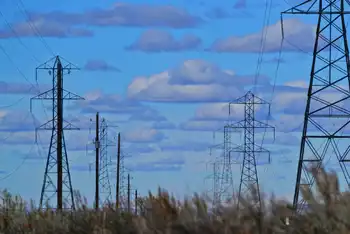Driven by Duke Energy, nuclear is a growing market
By Minneapolis-St. Paul Business Journal
Substation Relay Protection Training
Our customized live online or in‑person group training can be delivered to your staff at your location.

- Live Online
- 12 hours Instructor-led
- Group Training Available
There will be 100 workers there by the end of the year, and he expects 300 or more by 2014.
ThatÂ’s the kind of story that makes the Charlotte Chamber believe it can market this area as a magnet for the nuclear energy industry.
Expansion of nuclear engineering and industry support staff here could help broaden the local economy, says Kati Hynes, chamber vice president of economic development. “We are getting another industry in here.”
Already, the industry counts as many as 4,000 jobs spread among eight corporations including Areva S.A., The Shaw Power Group and Fluor Corp.
Nuclear’s influence in the Carolinas stretches beyond the Charlotte area from Aiken, S.C., to Raleigh, says Scott Carlberg, coordinator for the Carolinas Nuclear Cluster. “There is a crescent of nuclear knowledge in the Carolinas, and Charlotte is right in the center.”
Carolinas Nuclear Cluster is an association of utility companies and others involved in nuclear energy, including Duke Energy Corp., Scana Corp., URS Corp. and UNC Charlotte.
Why Charlotte?
Many reasons, to be sure. But a key is the dozen nuclear plants now planned or projected in the southeast. ThatÂ’s half the U.S. projects that are in some stage of planning.
Duke alone has three possible plants, including the Lee Nuclear Station. Duke played a major role in bringing The Shaw Power Group here and in parts of ArevaÂ’s regional expansion. Those moves, in turn, made this an attractive area for other players.
ShawÂ’s employment here is up to 1,500 workers after several expansions. Siemens Power Group employs more than 750 here and continues to add jobs.
Charlotte isn’t the only community seeking a critical mass in the nuclear industry. Mitch Singer, spokesman for the Nuclear Energy Institute, the industry’s lobbying organization in Washington, says many communities have the same idea. Ohio and western Pennsylvania are building their supplies of nuclear engineering jobs, says Carol Berrigan, NEI’s senior director of industry infrastructure. “We’ve seen development of centers where we’re seeing a lot of nuclear activity.”
But much of the nuclear industry does seem to be in the Southeast, where many of the plants are planned, Singer says.
Chattanooga, Tenn., may be CharlotteÂ’s greatest Southeastern challenger for job growth in the nuclear segment.
French-owned Alstom, a leader in electric generation, announced in 2008 that it would spend $280 million to expand operations there. Chattanooga sits in the center of the Southeast, where more than $50 billion in nuclear plant construction and maintenance is planned during the next three decades.
In Charlotte last year, Westinghouse Electric Co. announced 52 high-paying jobs and a $9.5 million investment. All the employees were nuclear engineers and technicians.
Harden says Westinghouse has reached that level already and will easily surpass it before the year is over. For his bosses at WestinghouseÂ’s Pittsburgh headquarters, the decision to build up a Charlotte office was an easy call.
Harden is vice president for North American sales at Westinghouse. He has been in Charlotte since 1992, starting out in an office condominium in SouthPark. The business was essentially servicing existing nuclear plants.
With interest in new construction growing, Westinghouse went looking for a location to build up its plant, engineering and fuel services. Charlotte was a natural choice. Duke, already a major customer and growing with plans for the Lee plant, is based here. The Shaw Group, which now owns 20% of Westinghouse and is its construction partner for WestinghouseÂ’s AP1000 nuclear reactors, has its power unit based here.
And there were plenty of other suppliers — and competitors — already on the ground. So Westinghouse opened its new office at 3545 Whitehall Blvd. It has one full floor in the five-story office building. Toshiba America Nuclear Energy announced last month it would put 194 workers on two floors of the same building by 2014.
Toshiba owns 67% of Westinghouse. And Harden says the two companies plan to fill the remaining floors of the building. With Westinghouse expecting to add 5,000 jobs in 20 states in the next few years, he expects many of those hires to be here.
Steve Patterson, director of UNC CharlotteÂ’s Energy Production Infrastructure Center, believes companies represented on the centerÂ’s board alone will need up to 3,000 engineers within five years. Hence the need for the engineer-training center, which is expected to occupy a new, $70 million building on the Charlotte campus in 2011.
Another indicator that the Carolinas is a hot spot for nuclear jobs: The NEI 2008 Women in Nuclear conference was jammed with participants, says Berrigan, the NEI senior director. “You’ve got a good base of nuclear business.”
And the local nuclear engineers aren’t just designing plans for the six new reactors planned for the Carolinas. “You should think of the Carolinas serving the world,” Carlberg says.
Westinghouse has sold 10 plants to be built in China. Its AP1000 will be the reactor for DukeÂ’s two units at Lee, the two Progress Energy Inc. plans to build at the Shearon Harris plant near Raleigh and the two Progress already has in Florida. It will also be the reactor for two South Carolina units built jointly by Scana and Santee Cooper, two in Georgia for The Southern Co. and a new unit for the Tennessee Valley Authority.
As those jobs ramp up, Harden says, the engineering and support services in Charlotte will take off.
Matt Sadinsky, chief executive of electric-industry training company SOS International, says a lot is happening on the engineering side in the region. French nuclear developer Areva has been hiring about 100 or so engineers in the last 12 months, he says. The company has announced plans to double its 545-person work force here. But it appears now that economic developers are seeking to lure the expansion to Northern Virginia.
He points out that the Electric Power Research Institute has an important presence in this region.
In fact, although EPRI is based in Palo Alto, Calif. — long a power-industry hub — it has its largest office here.
Like many jobs in the banking industry, nuclear-industry employment pays well. Last monthÂ’s announcement of ToshibaÂ’s plans to bring its jobs to Charlotte included a forecast that the average salary would be $122,000 a year.
There is another aspect of nuclear-industry jobs that the Charlotte Chamber likes: They’re virtually permanent. “It takes more than 10 years to build a nuclear power plant,” Hynes says. “It is not something that will go away tomorrow.”











